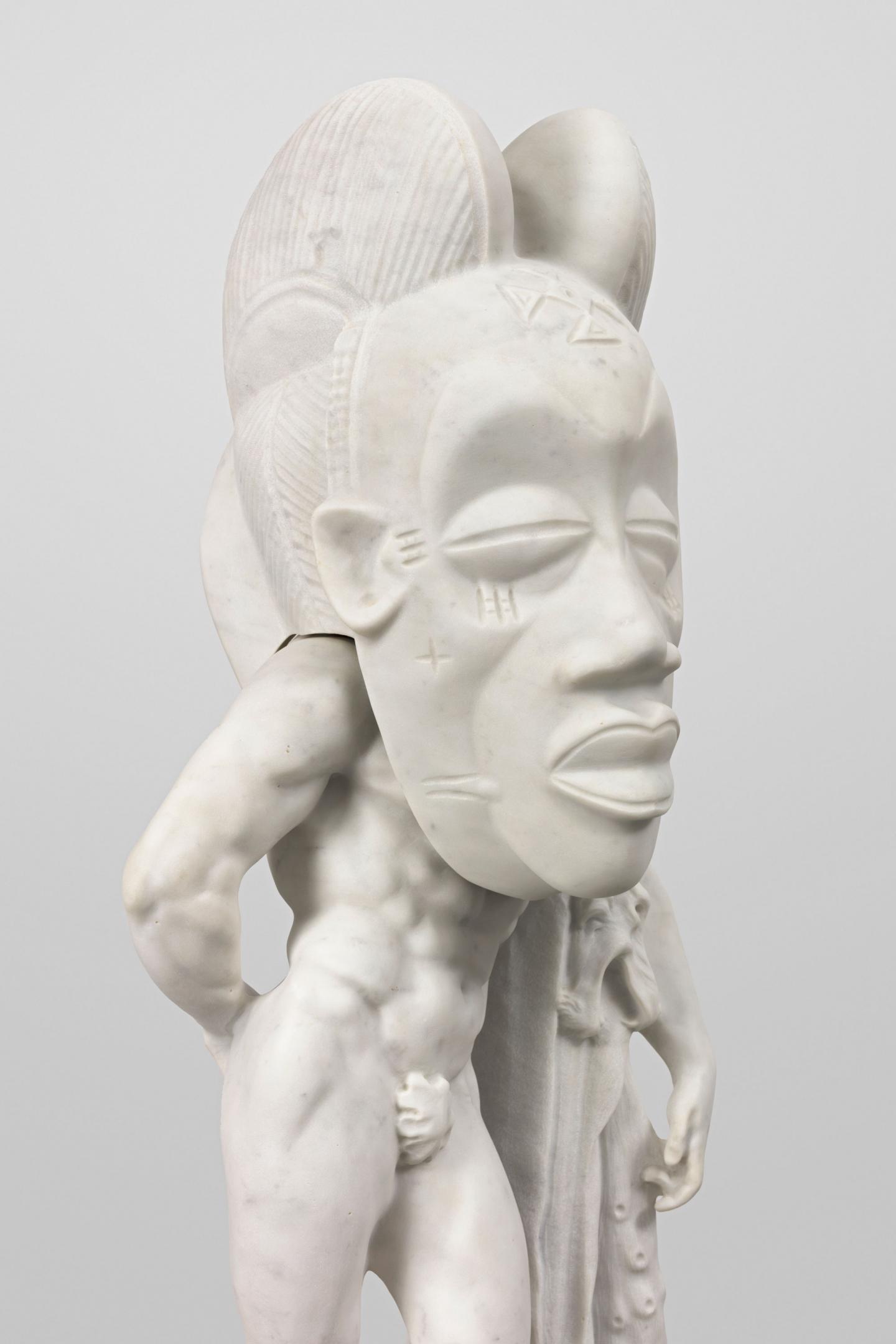Travel through Time and Space with Sanford Biggers
Two concurrent shows at the Bronx Museum and Marianne Boesky Gallery, New York, track the artist’s career and ‘chopped-and-screwed’ process of reimagining art history
Two concurrent shows at the Bronx Museum and Marianne Boesky Gallery, New York, track the artist’s career and ‘chopped-and-screwed’ process of reimagining art history

Antique quilts are mounted high on the walls of the Bronx Museum like clan banners in a medieval feasting hall. ‘Freedom Quilts’ such as these were hung from friendly windows, porches and clotheslines along the Underground Railroad – the route by which enslaved people were guided safely to freedom. Embedded in the quilts’ patterns was a secret code: an hourglass warned you to disguise yourself in higher-status clothing; a log cabin indicated a safe house; the North Star reminded travellers to look to the cosmos for direction. In ‘Codeswitch’, the first survey of Sanford Biggers’s quilt-based works, the artist cuts up, paints and splices these fabrics to create new material ledgers of Black life.

In quilting and computing alike, patches fix vulnerabilities and add information when the source code has been lost. Biggers’s works are similarly palimpsestic, exuberant, maximalist accumulations. The influence of the 1970s Pattern and Decoration moment – and the respect it accorded to gendered, racialized labour – is clear. Many works subtly suggest the outline of a human form and the shadows it casts, while sequins and metallic paint are judiciously used to great effect. All the quilts are semiotically open: in the chevrons and fractal organic forms of Sakura (2014), we might variously see a ribbon worm crawling through a frame shop, the titular Japanese cherry tree or a river and the ‘flying geese’ symbol that indicated those fleeing slavery should follow migrating birds north.

Many historians dispute the validity of the Freedom Quilts, but Biggers is more interested in folk histories that calcify through the power of collective belief. In any event, this is only one of many threads woven into the exhibition. In Quilt 35 (Vex) (2014), Biggers includes a QR code that links to the website of his mask-sporting ‘Afrofuturist boyband’, Moon Medicin. A number of works reference his ongoing interest in sacred geometry and indigenous power objects, most notably in several multi-planed, origami-like folded sculptures and the video Mandala of the B-Bodhisattva II (2000). Projected onto a raised platform, the latter depicts a breakdancing battle that took place 20 years ago in the same museum.
A concurrent, tightly edited show at Marianne Boesky, ‘Soft Truths’, features an overview of Biggers’s multivalent practice. Especially stunning are the four works from Biggers’s latest series, ‘Chimeras’ (2020–ongoing). Made from cool Italian and Portuguese marble, these figurative sculptures synthesize African and European forms and suggest an inversion of Frantz Fanon’s Back Skin, White Masks (1952). In Caniggula (2020) – a pawky reference to Roman emperor Caligula – a fig leaf-clad figure wears an oversized, imagined, central African mask (a hybrid of Chokwe and Punu traditions). Open at the back, the mask leaves the figure’s decidedly Greco-Roman features visible in semi-profile.

In the far corner of the gallery hangs Kubrick’s Rube (2020), made up of quilted blocks that feature a different fabric on each side, creating a lenticular illusion. On a Freedom Quilt, this ‘tumbling blocks’ pattern might indicate that you should pack up your things in preparation for travel, because one of the conductors who would lead you to safety was nearby. Although, given the titular reference to Stanley Kubrick – the director of 2001: A Space Odyssey (1968) – this time we might be going to Saturn. Maybe it’s because lately I’ve been watching Star Wars (1977–ongoing), but I’m seeing Death Stars and vortex-like portals and jumps-to-hyperdrive everywhere in Biggers’s work. It’s most overt in the bedazzled quilts: in the silver-leafed, segmented wormhole of Tyranny of Mirrors (2017); in the sequined, time-space shear of Transition (2018); and in the mirrored, planet-destroying hovering craft of Quilt 29 (Dark Star) (2013). Biggers’s chopped-and-screwed process makes time and history feel elastic and multidirectional, even as it adds a new verse to a very old song.
Sanford Biggers's 'Codeswitch' is on view at the Bronx Museum, New York through 5 April 2021; 'Soft Truths' at Marianne Boesky, New York is on view through 12 December 2020.
Main image: Sanford Biggers,'Codeswitch', 2020, exhibition view, Bronx Museum, New York. Courtesy: the Bronx Museum, New York; photography: Argenis Apolinario

























